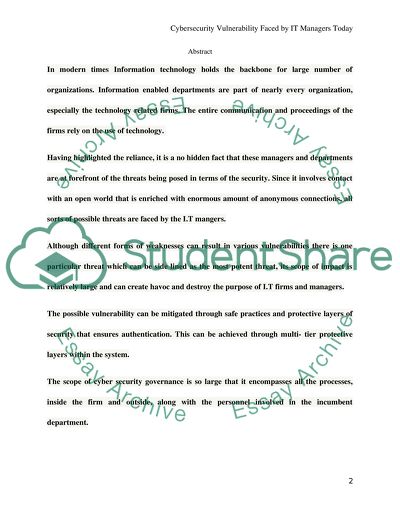Cite this document
(Cybersecurity Vulnerability Faced by IT Managers Today Term Paper, n.d.)
Cybersecurity Vulnerability Faced by IT Managers Today Term Paper. Retrieved from https://studentshare.org/information-technology/1603716-cybersecurity-vulnerability-faced-by-it-managers-today
Cybersecurity Vulnerability Faced by IT Managers Today Term Paper. Retrieved from https://studentshare.org/information-technology/1603716-cybersecurity-vulnerability-faced-by-it-managers-today
(Cybersecurity Vulnerability Faced by IT Managers Today Term Paper)
Cybersecurity Vulnerability Faced by IT Managers Today Term Paper. https://studentshare.org/information-technology/1603716-cybersecurity-vulnerability-faced-by-it-managers-today.
Cybersecurity Vulnerability Faced by IT Managers Today Term Paper. https://studentshare.org/information-technology/1603716-cybersecurity-vulnerability-faced-by-it-managers-today.
“Cybersecurity Vulnerability Faced by IT Managers Today Term Paper”, n.d. https://studentshare.org/information-technology/1603716-cybersecurity-vulnerability-faced-by-it-managers-today.


